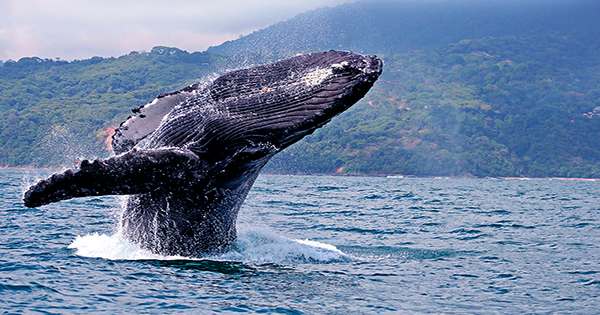Humans (and probably aliens) have been captivated with whale sound since the release of Songs of the Humpback Whale, a vinyl that reached number 62 on the charts, featured in National Geographic, and even travelled into space on Voyager. Even if we have no idea what the haunting whines and clicks that reverberate through the water are saying, it is easy to see why. However, what if we could translate these clicks, whistles, and whines, and send messages back? Communicating with whales may seem out of reach (and like the beginning of the greatest disaster film ever), but it is actually becoming more and more a reality.
According to Hakai Magazine, Project CETI (Cetacean Translation Initiative), which launched its ambitious quest in March 2020, is leading the interspecies discussion. The idea is to analyze whale melodies, learn their “language,” and eventually converse back to them. One can only hope that a reaction video of the first whale to engage in conversation with a ROV captured. The idea came up through a series of serendipitous talks, depending on your sentiments about constructing a narrative with a species whose intelligence could show to challenge our own (when was the last time you heard about a whale cramming 15 boiled eggs up its rectum?) (With humans, not whales).

It all started with Shafi Goldwasser, a computer scientist, and David Gruber, a marine biologist, talking about the parallels between sperm whale clicks and Morse code. They teamed up with computer scientist Michael Bronstein, who proposed that artificial intelligence (AI), might be used to search through mounds of sperm whale recordings for patterns similar to speech. The study calls into doubt the vexing question of when communication becomes language, and whether it occurs outside of people. Dr. Valerie Vergara had a lot to say on cetacean communication in a recent interview with IFLScience, having spent much of her career listening in on chatty beluga whales, which are renowned as the “canaries of the seas” due to their loud nature.
Young whales know to demonstrate their unique beluga “babble speaks” as they try to absorb vocalizations from their parents and the larger pod, according to Vergara. Vergara’s research is currently focusing on the recognition of distinctive vocal signatures among beluga whales, which could be crucial in determining whether they communicate and whether such interactions constitute a dialogue. Taking the cetacean conversation and turning it into something humans can evaluate necessitates the processing of a large amount of data, far more than human researchers are capable of, which is where AI comes in. Similar to autocorrect, language models like GPT-3 can effectively finish an unfinished sentence (or headline) by learning what normally comes next. Despite this, GPT-3 occasionally gets it horribly wrong.
So, we’ve got a model and whales, but what’s missing? To operate for human language, this kind of technology requires roughly 175 billion words; however, the present bank of sperm whale “codas,” the sperm whale equivalent of a word, is only 100,000. The next stage greatly increases the quantity of sperm whale recordings so that an AI’s neural network can adequately trained. Even after that, though, it is unclear how unwitting whales will greet the technology. “Perhaps they’d just say, ‘Stop talking such nonsense!'” Bronstein speculated.














